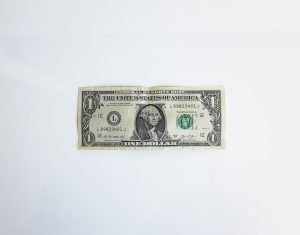Forex charts are an essential tool for any trader who wants to make informed decisions about buying and selling currency pairs. These charts provide a visual representation of the movements of currency pairs in the forex market. However, for a beginner trader, these charts can be overwhelming and confusing. In this article, we will explain how to read forex charts so that you can understand the information they provide.
Understanding the Forex Chart
First, let’s take a look at the basic components of a forex chart. A forex chart is made up of two axes, the x-axis (horizontal) and the y-axis (vertical). The x-axis shows time, and the y-axis shows the price of the currency pair. The price of the currency pair is plotted on the y-axis in the form of a line or a candlestick.
The time frame of the chart can be set to different time intervals, such as one minute, five minutes, one hour, one day, one week, and one month. The time frame you choose depends on your trading strategy and the duration of your trades.
Types of Forex Charts
There are three types of forex charts: line chart, bar chart, and candlestick chart.
1. Line Chart
A line chart is the most basic type of forex chart. It shows the closing price of the currency pair at the end of each time interval. The line chart is a simple way to see the trend of the currency pair over time.
2. Bar Chart
The bar chart is slightly more complex than the line chart. It shows the opening and closing prices of the currency pair, as well as the high and low prices during the time interval. The vertical line represents the range of prices during the time interval, and the horizontal lines represent the opening and closing prices.
3. Candlestick Chart
The candlestick chart is the most popular type of forex chart. It shows the opening and closing prices, as well as the high and low prices during the time interval. The candlestick chart is similar to the bar chart, but it is easier to read and provides more information. Each candlestick represents a time interval, and the color of the candlestick indicates whether the closing price was higher or lower than the opening price.
How to Read a Forex Chart
Now that we have covered the basics of forex charts let’s discuss how to read them.
1. Identify the Trend
The first step in reading a forex chart is to identify the trend of the currency pair. The trend is the direction in which the price of the currency pair is moving. You can identify the trend by looking at the direction of the line or the candlesticks. If the line or the candlesticks are moving upward, the trend is bullish, and if they are moving downward, the trend is bearish.
2. Identify Support and Resistance Levels
Support and resistance levels are significant price levels that act as barriers to the movement of the currency pair. Support levels are price levels at which the currency pair tends to stop falling, and resistance levels are price levels at which the currency pair tends to stop rising. You can identify support and resistance levels by looking at the horizontal lines on the chart.
3. Use Technical Indicators
Technical indicators are mathematical calculations based on the price and volume of the currency pair. There are several technical indicators that traders use to make informed decisions. Some of the most popular technical indicators are Moving Average, Relative Strength Index (RSI), and Bollinger Bands.
4. Use Price Patterns
Price patterns are specific formations on the chart that indicate a potential change in the trend of the currency pair. There are several price patterns that traders use to make informed decisions, such as Head and Shoulders, Double Top, and Triple Bottom.
Conclusion
In conclusion, reading a forex chart is a crucial skill for any trader who wants to make informed decisions about buying and selling currency pairs. Understanding the basics of forex charts, identifying the trend, support and resistance levels, using technical indicators, and price patterns are essential for successful trading. With practice and experience, you will develop the skills to read forex charts and make profitable trades.





